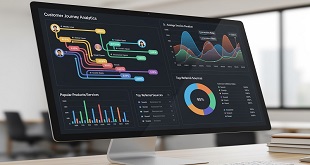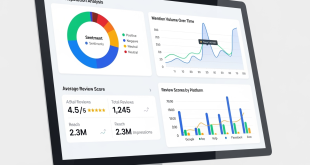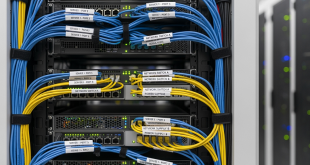Though technology is quick to evolve, the same unfortunately applies for cyberattacks, data breaches, hacking, phishing, and other crimes unleashed by bad actors. If you work at a job that requires you to manage high-value digital assets or run a business that’s primarily data-driven, you’ll want to put an extra layer of protection on your electronic devices to properly defend them against a variety of threats.
Businesses should learn the differences between the software to be sure they are using the right systems. The best enterprise service management software can make all the difference to even the basics of business ideas – and the right software could be a gamechanger for yours, too. Taking the time to do the research will help with that understanding.
A couple of decades ago, viruses were once the predominant modus of bad actors. But recently, a more complex array of threats has arisen, and these range from stealthy spyware to crippling ransomware. To properly navigate through a digital minefield of populated by both viruses and malware, you’ll need to know the difference between the two—plus, which tools and technologies you should have in your arsenal to sufficiently protect your assets.
Perhaps the two most important ones for you to learn about are antivirus and anti-malware software. Though many people often still confuse the two, they’re quite different in purpose. While antivirus software is considered a “traditional” cybersecurity solution and has long been the first defense against well-known threats like viruses and worms, anti-malware software is meant to defend your devices against newer threats that are often more elusive and damaging.
Here are further distinctions between these two types of software, plus how to choose the ideal solution for example upon doing a TotalAV review:
1) Primary Focus
Antivirus software mainly targets common threats like viruses (which spread through executable files), worms (which purposefully degrade a device’s performance), and Trojans (malware disguised as legitimate programs). These are old, but prevalent forms of malware which often replicate themselves or spread malicious code through networks and devices.
In contrast, makers of anti-malware software have adopted a broader perspective and engineered anti-malware solutions to counteract a wider spectrum of modern threats, including ransomware, spyware, and adware. Anti-malware software is typically more proficient at handling sophisticated malware that often slips past traditional antivirus defenses, thus providing an additional layer of security against novel digital threats that are continuously evolving.
2) Detection Methods
An antivirus program typically relies on signature-based detection, which compares potential threats against a database of known malware signatures. This is effective against established or known threats, but has its limitations when identifying and addressing new viruses. As a response, modern antivirus solutions now incorporate heuristic and behavior-based detection methods. These methods allow them to recognize new variants of known or entirely new viruses by analyzing their patterns and behaviors.
Meanwhile, anti-malware software already leans on heuristic and behavior-based detection from the outset, which enables it to effectively identify and neutralize malware based on suspicious behavior or characteristics. It is particularly effective against polymorphic and metamorphic malware, which frequently alter their code to evade detection.
3) Frequency of Updates
Most antivirus programs traditionally update their signature databases at regular intervals, often daily, as these updates are essential for keeping up with the emergence of new virus definitions. Given how often malware evolves, on the other hand, anti-malware software typically necessitates even more frequent updates.
Since new malware is developed quite continuously—and the very same can be said of the attack strategies bad actors often use—anti-malware solutions must update their detection capabilities more regularly in comparison to antivirus ones. These updates play a significant role in protecting users against zero-day threats and other recent forms of malware that have adapted at an alarmingly fast rate.
4) System Impact
Depending on its design and the depth of its scanning processes, antivirus software can be quite resource-intensive. This is particularly evident during full system scans or large-scale updates, which may temporarily slow down system performance.
In contrast, anti-malware software is usually designed to be less taxing on system resources. It often operates in the background, with a minimal footprint to focus on real-time protection without significantly impacting the device’s overall performance. This lighter design is especially advantageous for users who require continuous protection without sacrificing their system’s speed and efficiency.
5) Preventative Measures
Antivirus software often comes with preventative tools such as firewall protection, email scanning, and safe browsing features. These are deployed to prevent malware from infecting the system in the first place.
Meanwhile, anti-malware software, while also offering real-time protection, tends to concentrate more on the remediation and removal of malware post-infection. It is especially adept at identifying and eliminating malware that has already breached other lines of defense. That makes it act as a second layer of protection, one that’s rolled out after a threat has been detected.
6) Compatibility
Traditionally, antivirus programs are devised to function as the primary defense mechanism on a computer system. As such, they may only sometimes be compatible with similar security tools running concurrently due to potential functionality and resource usage overlap.
Anti-malware software, on the other hand, is often designed to complement antivirus solutions. It is specifically developed to work alongside and thus enhance the security provided by antivirus software. This compatibility allows users to benefit from the strengths of both types of software, providing a more layered and robust defense against a wide array of cyber threats.
Know How to Prioritize Your Digital Security
Your understanding of the unique strengths and functionalities of each type of software will enable you to tailor your cybersecurity approach according to what you need and according to the kinds of threats your devices might experience on the regular. Now that cybercriminals have become more sophisticated about their methods of exploiting users and their assets, it’s especially important to be well-informed and proactive about your approach to digital security.
If you’re looking to compare features of different antivirus and anti-malware programs so that you can choose the best one for your applications, look for detailed reviews from other users who can shed light on specific functionalities and performance metrics. This knowledge will go a long way when it comes to investing in appropriate solutions that will both defend your devices and keep them running at the peak of their performance for the longest possible time.
 Entrepreneur Resources Your source for small business information
Entrepreneur Resources Your source for small business information





